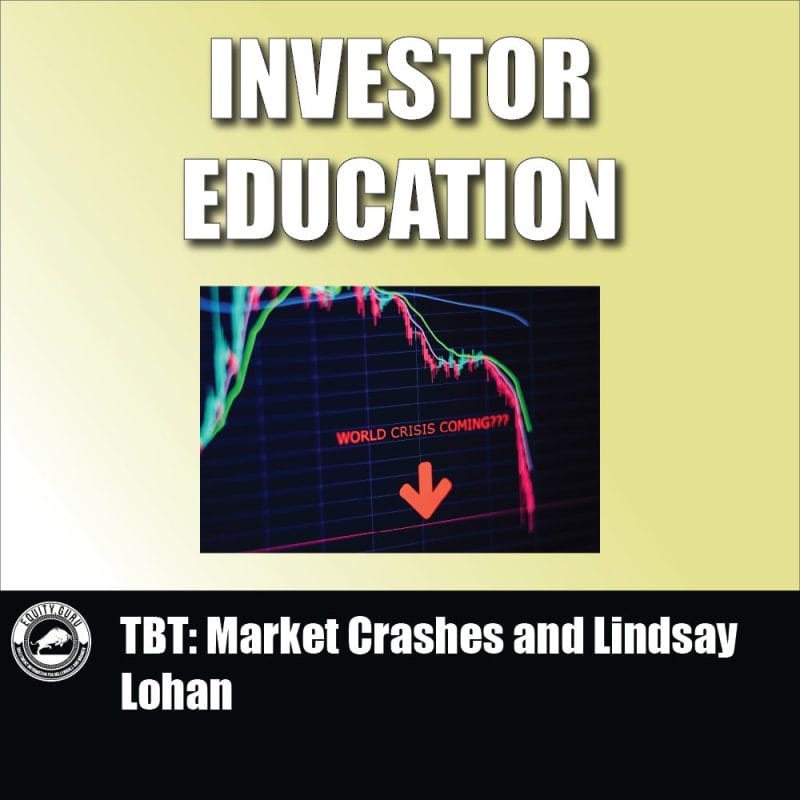Every other day it seems I’m confronted with throwback pictures of Lindsay Lohan on my Instagram Explore feed. Whether she’s sandwiched between Paris Hilton and Britney Spears on a night out, passed out drunk in a car or posing sexily with kitchen knives in a racy DIY photo shoot, the accounts updating me on Lohan’s party girl past are usually Y2K fan pages dedicated to all the trashy exploits of our Juicy-wearing faves from the early ’00s.
Captions like “lindsay lohan is my spirit animal 💫” meme-ify these images of her with eyes half-shut and a lit cigarette dangling from unlatched lips, as though she’s the messy patron saint we can all look to late on a Sunday evening when the reality of another week gone by sets in. As if the best way to level with any regrets is by staring at a picture of her crying in court about to get handed another probation violation and muttering to ourselves, “same.”
There is comfort, I think, in not only witnessing another person’s chaos (particularly when it seems worse than your own) but also in the knowledge that it is in the past. That time changes things. Lindsay, after 6 stints in rehab, is now 35 years old, engaged, lives in Dubai, and has signed a Netflix deal to star in three new projects (this feels like the end of a teen rom com when the screen fades to black and they tell you that the girl did end up going to Harvard and that she’s still with her 31-year-old “high school” boyfriend despite the distance). What comes up must come down, and so on and so forth…
The stock market has shown itself to be no different. If my investing girlies (and boysies, I don’t discriminate) have been reading dire headlines like:
1. The Slow Crash on Wall Street Likely Isn’t Over Yet.
2. The human flaws that fueled this market crash – and why they keep failing us when investing
3. Crypto bloodbath will spill over to stocks; Market crash isn’t over yet
Don’t panic. Here’s a quick TBT of some of the major stock market crashes (in the U.S of A) in the past 100 years and how they recovered…
What is a stock market crash?
First things first, there is no conventional way of describing a market crash. The term commonly applies to an abrupt decline in the stock market index over a single or several days. Stock market crashes have severe effects on the economy and investors’ behavior (essentially, the overall economy of a country depends on its stock market – so it’s like, totally not kosher when it crashes).
The most common ways investors are bound to lose their money in the event of a stock market collapse is when they sell shares following a sudden drop in market prices after having purchased many shares before a market crash. A Panic at the Disco (!) type thing. Consequently, a market crash causes stock market investors to incur significant losses in their portfolios.
1929: The Wall Street Crash
The Crash:
If you are not familiar with the terms “Black Tuesday” or “Great Depression” you were a stoner in high school and skipped class to smoke near the bleachers, don’t try to tell me differently.
On October 29th, 1929, the New York Stock Exchange collapsed. It marked the end of the ‘roaring twenties’ and the start of the ‘great depression’ – a terrible trade off.
Basically, everyone was riding a Lohan party high in the 20s and the US stock market saw rapid expansion (in other, very different and not at all related words – everyday people were buying stocks with borrowed money and the stocks were serving as collateral for the loans).
By summer of 1929, the economy started showing signs of a slowdown (think of this as Lohan’s 3rd visit to rehab – it is becoming problematic). Production declined, unemployment rose, wages were low, debt was proliferating, all awful things glommed into one, larger awful thing and…
On October 29th the Dow Jones Industrial Average (girlies we know this – it is that US index that lists the performance of 30 prominent companies) fell 12%. The decline didn’t stop until 1932 when markets hit their lowest point.
The Recovery:
The Great Depression, as its title suggests, was greatly depressing. By 1933, unemployment hit all-time highs and the employed took drastic pay cuts. To combat this, a name you might recognize (unless you were a bleacher kid), Franklin Roosevelt, launched the ‘New Deal’.
This deal compiled a bunch of governmental measures to stimulate the economy and create jobs. It managed to restore confidence in the markets and 25 years later (1954), the Dow managed to recoup its losses.
(I am skipping over the 1987 Black Monday crash – it just wasn’t inspiring me, but if it sounds inspiring to you, read about read about it here).
2000: Dot Com Bubble
The Crash:
Oh, hey 1990s! Remember when everyone had skinny eyebrows and the internet got commercialized and we were all excited about it? Basically, all these new glittery tech companies (‘dotcoms’) launched and every buzzing investor from here to timbuktu dumped their money into them (without recognizing that some of the companies had no business plans or earnings at all).
This overconfidence created something called a “speculative bubble” – when some investments are overvalued. On March 10, 2000, the bubble burst. The Nasdaq composite (say it with me, the US market that lists tech companies!) fell more than 20% that April. By October 2002 the market hit its lowest point – 80% down from its peak.
The Recovery:
The Internet, as we now know, was in fact the beginning of the future. By the end of 2002 the Nasdaq bounced back and in 2015, the market recouped its losses.
2008: Stock Market and Housing Crash
The Crash:
Has anyone here watched The Big Short? If so, you know what I’m talking about and can skip this tidbit. If not, in the mid-2000s many investors felt that owning real estate was a safer bet than tech stocks (I’d imagine the aforementioned dot-com bubble influenced this sentiment).
Interest rates were ridiculously low and banks had reduced their borrowing requirements to (irresponsibly) attract investors. Demand exploded for homeownership, as did risky borrowing, mortgage fraud, and house flipping. The bubble burst when, among other things, home supply outstripped demand, prices crashed, and masses of homeowners defaulted on mortgages.
The Recovery:
The government was quick to intervene and limit the impact of the crash. Central banks cut interest rates to stimulate consumption and investment and greater regulations were introduced in the financial world to guard against further excesses.
In the UK, for example, the Bank of England is now responsible for supervising individual banks and building societies, and runs aggressive stress tests to evaluate banks’ capacity to deal with severe market conditions without government assistance. With all these measures in place, markets managed to bounce back quickly.
2020: Miss Pandemi!
The Crash:
We all know her too well. The coronavirus pandemic began to shut down the U.S of A in March 2020 and the markets crashed. Miss pandemic impacted many sectors worldwide, including healthcare, natural gas, food, and software. The Dow, S&P 500, and Nasdaq (our Regina George, Gretchen Wieners and Karen Smith) fell between 12% and 13%.
The Recovery:
The markets managed to recover quickly and by August the S&P 500 had returned to its former highs. The pandemic’s effects on other aspects of the world’s economy have been longer lasting…
People who know things about stocks and finance seem to believe that the market’s current crash is a result of the unstable foundation set by Miss Pandemi herself. These same people seem to suggest the best course of action is to weather the storm.
For comfort: If history has demonstrated anything, it’s that volatility, crashes, and corrections are a normal part of the investing cycle, and the price of admission to what’s arguably the greatest wealth creator on the planet.
Until next week.


